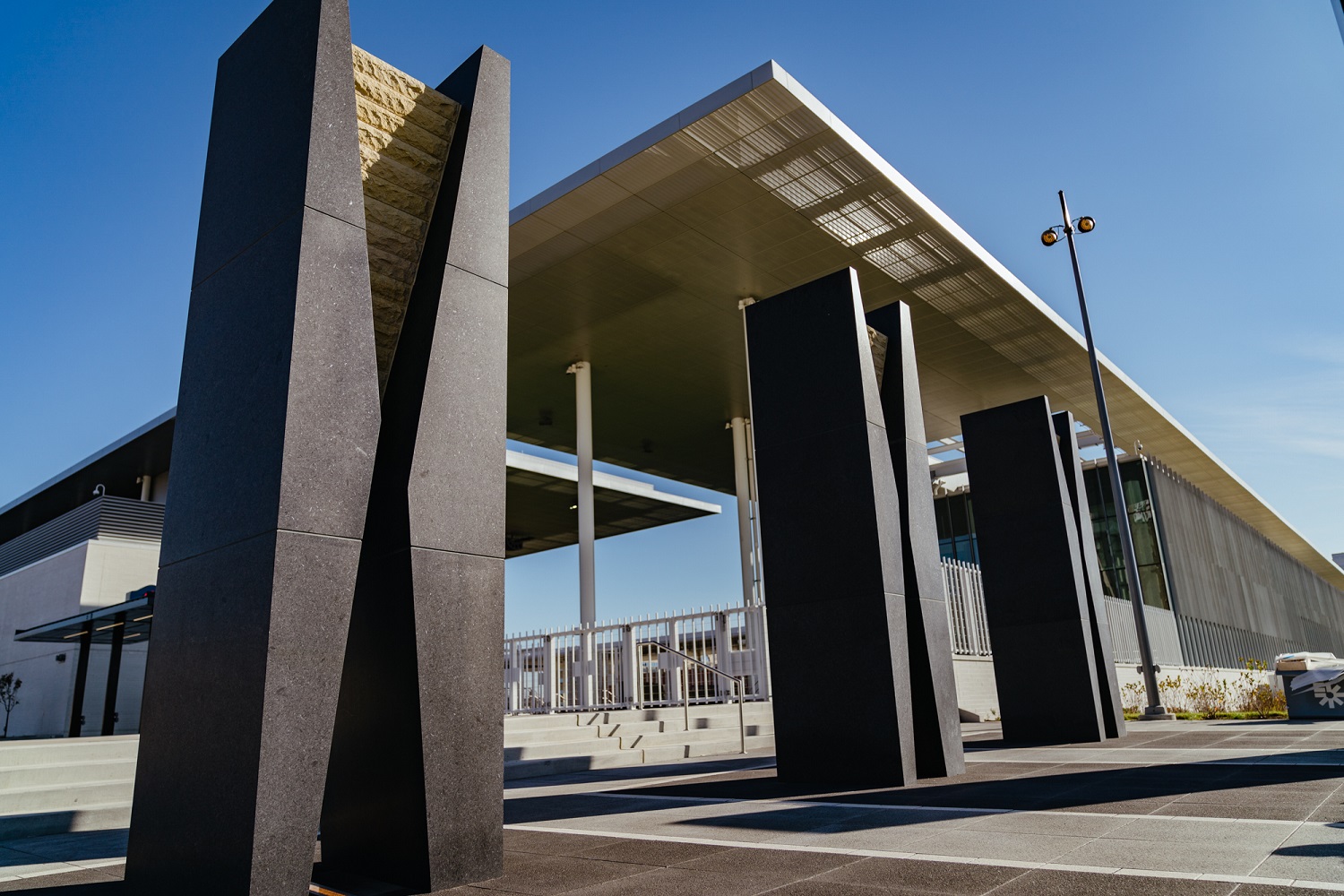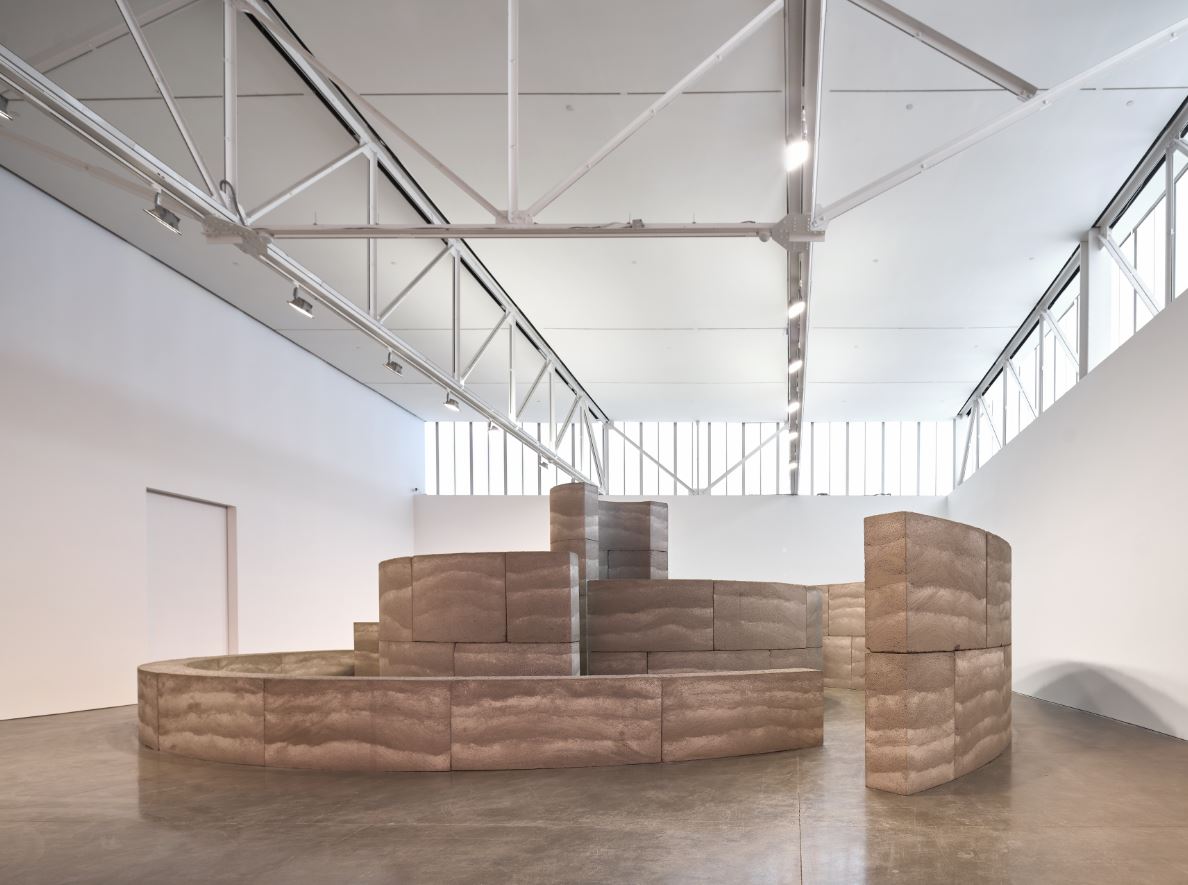
The power of art to bring about generational change is at the essence of Counterpublic 2023, a citywide public art platform that opens in St. Louis tomorrow.
Using the cityscape as its canvas, the massive exhibition – one of the largest public art initiatives in the country – incorporates the works of local and national artists in parks, gardens, historical landmarks and museums along a 6-mile stretch of Jefferson Avenue, from the southern riverfront to the Brickline Greenway downtown to St. Louis Avenue in North City.
This is the second edition for Counterpublic, co-founded in 2019 by James McAnally and Lee Broughton as a triennial civic exhibition to take place in the city for three months every three years. Originating from the innovative, expansive art platform The Luminary, Counterpublic incorporated as a nonprofit in 2021. This year’s exhibit, from April 15 to July 15, features both temporary and permanent installations of more than 30 new artist commissions.
“We use the words, ‘civic exhibition’ and ‘a citywide public art festival,’ but it exceeds categories,” McAnally said. “We wanted to make something special and irreplaceable to the region – something new and dynamic that’s never been experienced before.”
Counterpublic promotes an inclusive art platform and encourages creative thinking and community engagement with an eye toward the future and generational change.
“St. Louis can sometimes get caught in its past,” McAnally said. “But you can’t move toward the future without reckoning with the past. With the exhibit, we’re looking at the past through a lens of repair and asking ourselves in the present what can be done to make amends, whether it’s for the removal of native people, the destruction of the mounds or the demolition of Mill Creek Valley in the 1950s.”

Projects showcased in this year’s exhibition include Counterpublic’s ongoing work to rematriate Sugarloaf Mound to the Osage Nation, descendants of the Mississippians who constructed the mounds as sacred, ceremonial sites. Sugarloaf Mound is the last remaining Indigenous mound in St. Louis. Two private homes currently occupy the site on Ohio Avenue.
New Red Order, a group of artistic collaborators, is documenting the legal negotiations for the return of Sugarloaf Mound via a video called, “Give It Back: Stage Theory,” which will be screened along Jefferson Avenue and at the Saint Louis Art Museum. Surrounding the mound is “WayBack” by Oklahoma-based Osage artist Anita Fields. The installment is a series of 40 platforms decorated with Indigenous ribbon-work patterns that resemble those found at Osage celebrations. “WayBack” will be presented in tandem with a composition for wind instruments written by the artist’s son, musician Nokosee Fields.

At Monaco, The Luminary’s artist-run cooperative on Cherokee Street, “State Names Map: Cahokia” by Native American visual artist Jaune Quick-to-See Smith explores St. Louis’ history of trade among Native Americans long before settlers arrived in the region (then called Cahokia). Accompanying the painting is a canoe, similar to the vessels that transported Native people to Cahokia and constructed by Smith from the wood of the Osage orange tree.

To the east of Jefferson Avenue in the area known as Downtown West lies the former site of Mill Creek Valley, a predominantly Black neighborhood demolished in the late 1950s in the name of “urban renewal.” To memorialize the once-thriving community, St. Louis artist Damon Davis was commissioned to create a mile-long permanent public monument along the Brickline Greenway that begins with “Pillars of the Valley” at CITYPARK soccer stadium.
Expanding the presence of the Griot Museum of Black History in North St. Louis was another goal and to this end, the triennial commissioned renowned Ghanaian-British architect David Adjaye to create his first permanent public artwork. Adjaye’s large-scale sculpture, “Asaase III,” inspired by the artist’s ongoing reflections on the origins of Black architecture and its relationship to the earth, will be donated to the Griot by Counterpublic.

Before selecting the cohort of artists for 2023, McAnally explains it took a yearlong community engagement process.
“We listened to what the people in the community we were working with were interested in,” he said. “We had monthly listening sessions and met with over 800 people. From there, we had a curatorial team working in the different neighborhoods.”
The intentional approach ensured an open exchange of ideas, according to McAnally.
“There’s not just one point of view represented – we wanted it to be as diverse as the city itself,” he said. “We invited a strong mix of local and nationally recognized artists to stand for the best of what the world has to offer.”
Other St. Louis-based artists participating in the triennial are Jen Everett, Robert Green, Yvonne Osei, Tim Portlock, Vincent Stemmler, Black Healers Collective and Simiya Sudduth.
“It’s a celebration of all we have to offer, a reintroduction to the world of the creative community here,” McAnally said. “One thing about this platform is people are coming to St. Louis from all over the world to experience this.”
Opening weekend festivities for Counterpublic begin with a public celebration Friday, April 14, from 7 to 9 p.m. at CITYPARK and adjacent sites. A full day of unveilings, performances and activations is planned throughout the various sites on Saturday, April 15. On Sunday, April 16, the Pulitzer Arts Foundation in Grand Center is hosting a series of conversations about the works featured in the exhibition. Additional activities and events are slated to take place throughout the triennial’s run.
For more information, visit the Counterpublic website.
St. Louis Artist Reclaims Her Story by Challenging Colonial Stereotypes





